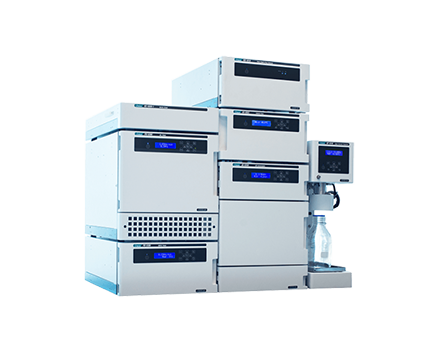Separation of Aromatics in Diesel Fuel by Supercritical Fluid Chromatography (ASTM D5186)
January 5, 2024
Introduction
Many components including aliphatic hydrocarbons and aromatic hydrocarbons such as paraffins and olefins are contained in petroleum fuel such as gasoline, gas oil, etc. Analyzing these components is very important because these components greatly affect the efficiency of the fuel and the amount of environmental pollutant which is discharged from engine after burning. Separation analysis methods such as High Performance Liquid Chromatography (HPLC), Gas Chromatography (GC) or Supercritical Fluid Chromatography (SFC) are widely used for analyzing petroleum fuel.
Among those methods, Supercritical Fluid Chromatography has been used to derive an ASTM (The American Society for Testing and Material) method because the components in petroleum fuel can be separated with high resolution and can be analyzed in a short time with high stability.
This time polycyclic aromatic components in diesel fuel were analyzed using Supercritical Fluid Chromatography system in accordance with ASTM D5186 as reported below.
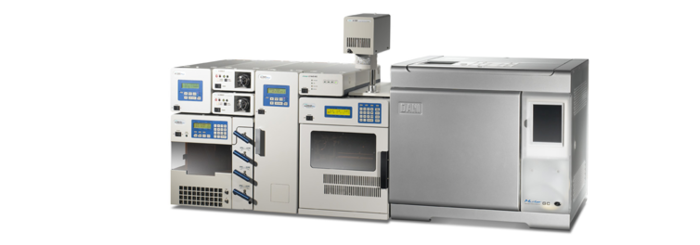
Experimental
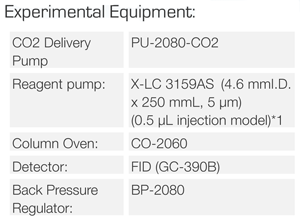

Keywords
820020SRE
Results
Overlapped chromatograms (n = 10) of standard mixture are shown in figure 1, and the result of retention time repeatability is shown as in Table 1. The repeatability obtained was less than 0.2% and the resolution of Hexadecane and Toluene was 11.2, and the resolution of Tetralin and Naphthalene, 4.9.

1.Hexadecane, 2.Toluene, 3.Tetralin, 4.Naphthalene
Table 1 Retention Time Repeatability of Standard Mixture (n=10)
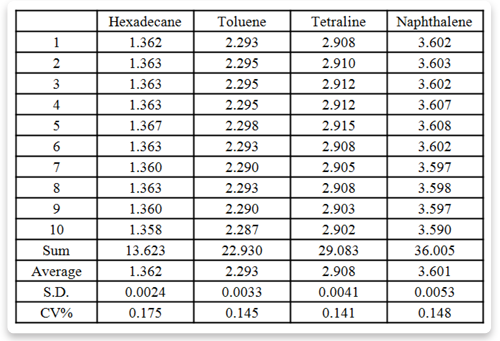
The chromatogram of commercially available gas oil is shown as in figure 2. The area percent of each component was: non-aromatics: 71.8%, and aromatics: 28.2%.
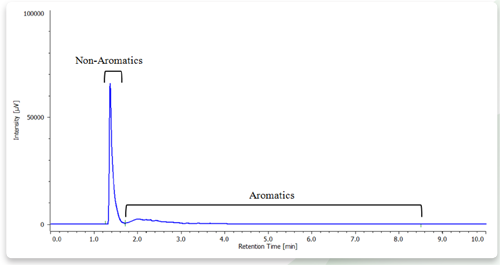
Featured Products:

Separation of Aromatics in Diesel Fuel by Supercritical Fluid Chromatography (ASTM D5186)
Introduction
Many components including aliphatic hydrocarbons and aromatic hydrocarbons such as paraffins and olefins are contained in petroleum fuel such as gasoline, gas oil, etc. Analyzing these components is very important because these components greatly affect the efficiency of the fuel and the amount of environmental pollutant which is discharged from engine after burning. Separation analysis methods such as High Performance Liquid Chromatography (HPLC), Gas Chromatography (GC) or Supercritical Fluid Chromatography (SFC) are widely used for analyzing petroleum fuel.
Among those methods, Supercritical Fluid Chromatography has been used to derive an ASTM (The American Society for Testing and Material) method because the components in petroleum fuel can be separated with high resolution and can be analyzed in a short time with high stability.
This time polycyclic aromatic components in diesel fuel were analyzed using Supercritical Fluid Chromatography system in accordance with ASTM D5186 as reported below.

Experimental


Keywords
820020SRE
Results
Overlapped chromatograms (n = 10) of standard mixture are shown in figure 1, and the result of retention time repeatability is shown as in Table 1. The repeatability obtained was less than 0.2% and the resolution of Hexadecane and Toluene was 11.2, and the resolution of Tetralin and Naphthalene, 4.9.

1.Hexadecane, 2.Toluene, 3.Tetralin, 4.Naphthalene
Table 1 Retention Time Repeatability of Standard Mixture (n=10)

The chromatogram of commercially available gas oil is shown as in figure 2. The area percent of each component was: non-aromatics: 71.8%, and aromatics: 28.2%.


 Download This Application
Download This Application